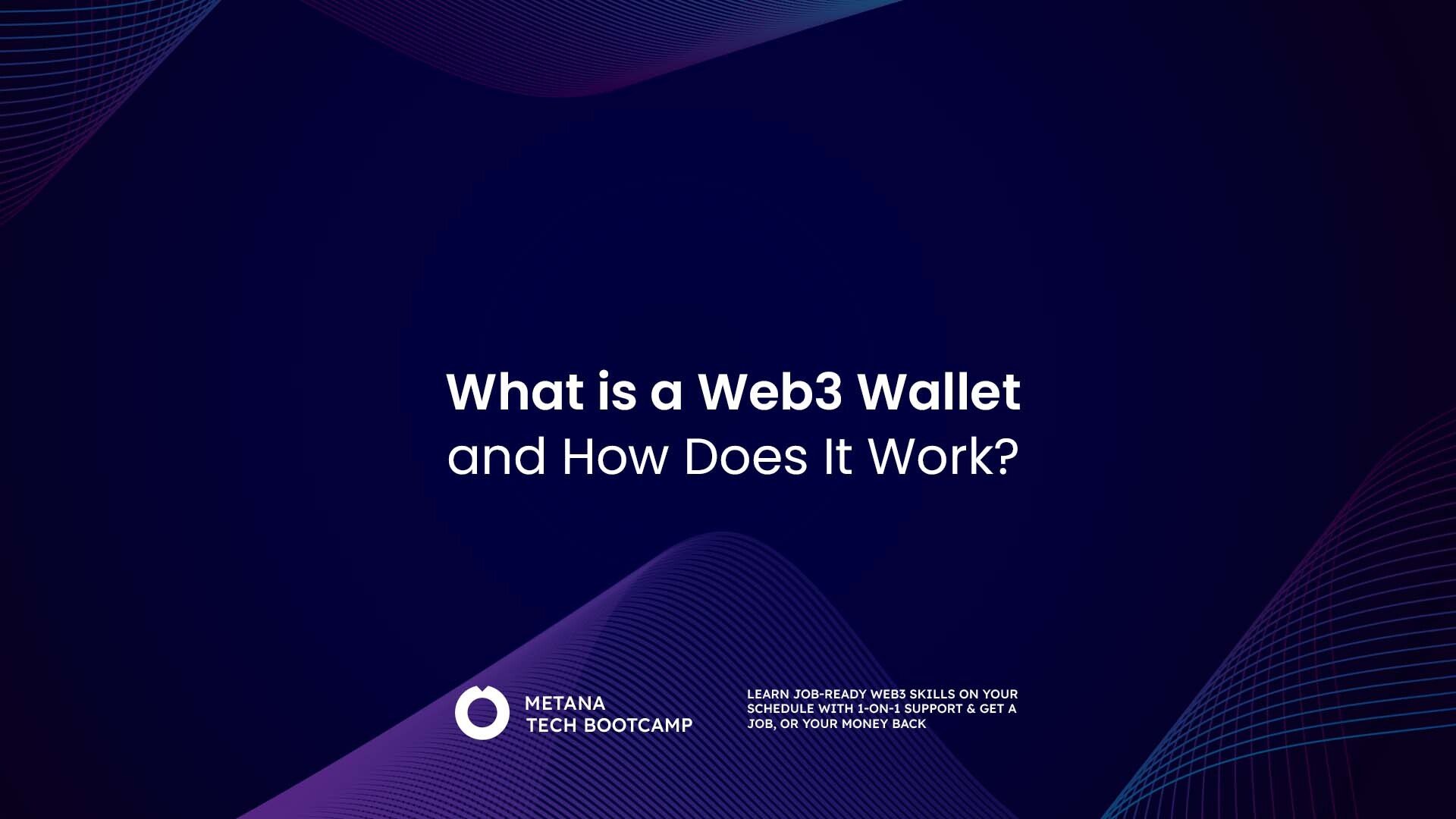Key Definiton of Web3 Wallets
A Web3 wallet is a digital tool that enables users to securely store, manage, and interact with digital assets such as cryptocurrencies and non-fungible tokens (NFTs) within decentralized applications (dApps) on blockchain networks. It operates by generating a pair of cryptographic keys which is a public key for receiving assets and a private key for signing transactions. Web3 wallets come in various types, including non-custodial wallets, custodial wallets, and smart contract wallets, each offering different levels of control and features.
Web3 wallets work through cryptographic key pairs: a public key serving as your receiving address and a private key that signs transactions and controls access. When you send a transaction, your wallet signs it with the private key and sends it to the blockchain network. Network nodes validate the signature and verify your balance, then add the approved transaction to the blockchain where it’s permanently recorded. The process ensures secure, tamper-proof transactions through cryptographic verification at each step.
In the rapidly evolving digital economy, Web3 wallets have become essential tools for managing blockchain assets. According to a recent study, over 70 million unique blockchain wallet users have been recorded worldwide, highlighting the growing adoption of decentralized technologies.
Unlike traditional wallets that store physical currency, Web3 wallets are designed to handle digital assets such as cryptocurrencies, non-fungible tokens (NFTs), and other tokenized rewards. They enable users to securely store, manage, and transfer these digital assets across decentralized networks. This article explores on what is a Web3 wallet and how does it work.
What is a Web3 Wallet?
A Web3 wallet is a digital tool that allows users to securely store, manage, and engage with digital assets like cryptocurrencies and non-fungible tokens (NFTs) across decentralized applications (dApps) built on blockchain networks. It functions by creating a pair of cryptographic keys—a public key that serves as your receiving address and a private key used to authorize transactions. Web3 wallets are available in several forms, including non-custodial wallets, custodial wallets, and smart contract wallets, each providing distinct levels of user control and functionality.
Types of Web3 Wallets
There are three main types of Web3 wallets:
- Non-Custodial Wallets: These wallets give users full control over their private keys, ensuring complete ownership of their digital assets. Examples include MetaMask and Phantom.
- Custodial Wallets: In custodial wallets, a third party manages the private keys on behalf of the user. Popular custodial wallets include those offered by exchanges like Coinbase Wallet.
- Smart Contract Wallets: These wallets are governed by smart contracts, which are self-executing contracts with the terms of the agreement directly written into code. They offer advanced features and automation.

How Web3 Wallets Work
Web3 wallets operate by generating a pair of cryptographic keys: a public key, which is the address for receiving assets, and a private key, which is used to sign transactions and access the wallet’s contents. When a user initiates a transaction, the wallet signs it with the private key and broadcasts it to the blockchain network for validation and recording.
- Key Generation: Upon creating a Web3 wallet, a unique pair of cryptographic keys is generated. The public key acts as an address where digital assets can be sent, while the private key is kept secret and used to authorize transactions.
- Transaction Signing: When a transaction is initiated, the wallet uses the private key to sign it. This digital signature verifies the sender’s identity and ensures the transaction’s integrity.
- Broadcasting to the Network: After signing, the transaction is broadcasted to the blockchain network. Nodes within the network validate the transaction by checking the digital signature and ensuring the sender has sufficient funds.
- Validation and Recording: Once validated, the transaction is added to a block and recorded on the blockchain. This process is secure and immutable, preventing unauthorized changes.
Security Practices for Web3 Wallets
To ensure the security of digital assets, users should follow these best practices:
- Safeguard Private Keys: Never share private keys and store them securely offline.
- Two-Factor Authentication: Enable two-factor authentication (2FA) for an added layer of security.
- Regular Software Updates: Keep wallet software updated to protect against vulnerabilities.
- Use Hardware Wallets: Consider using hardware wallets for offline storage of private keys, providing robust protection against online threats.
Integrating Web3 Wallets in Businesses
Businesses can integrate Web3 wallets to facilitate digital asset management, enhancing security and streamlining processes. For instance, Circle’s Programmable Wallets provide an easy and secure solution for businesses to manage blockchain-based assets. These programmable wallets offer features such as automated transaction processing, multi-signature support, and customizable permissions, making it easier for businesses to handle digital transactions securely.
Enhanced security features like multi-signature support and secure key management protect digital assets against unauthorized access and cyber threats. By automating transaction processes and utilizing smart contracts, businesses can reduce manual intervention, lower costs, and improve efficiency. Additionally, blockchain’s immutable ledger provides a transparent record of all transactions, enhancing accountability and trust.
Web3 wallets can handle a large volume of transactions, making them suitable for businesses of all sizes. By leveraging Web3 wallets, businesses can tap into the growing blockchain ecosystem, unlocking new opportunities for innovation and growth.
Conclusion: What is a Web3 Wallet and How Does it Work?
Web3 wallets are essential tools in the decentralized digital economy, providing secure and efficient management of digital assets. They work by generating cryptographic keys to secure transactions and enable interactions with blockchain networks. By understanding their types, workings, and security practices, users and businesses can effectively leverage these wallets to participate in the blockchain ecosystem and unlock new opportunities for growth and innovation.
FAQs
Are Web3 wallets secure?
- Yes, Web3 wallets are generally secure if users protect their private keys and use reputable wallet providers.
Can I use a Web3 wallet for all cryptocurrencies?
- Web3 wallets typically support multiple cryptocurrencies, but compatibility depends on the specific wallet and blockchain networks.
What are some popular Web3 wallets?
- Popular Web3 wallets include MetaMask, Trust Wallet, and Coinbase Wallet.
What is the difference between a Web2 and Web3 wallet?
- A Web2 wallet is centralized and often tied to a specific service, while a Web3 wallet is decentralized and interacts with blockchain networks.
How do I set up a Web3 wallet?
- To set up a Web3 wallet, download a wallet app, create an account, and secure your private key or seed phrase.
Can I use a Web3 wallet on my mobile device?
- Yes, many Web3 wallets offer mobile apps for convenient access and transactions on the go.








